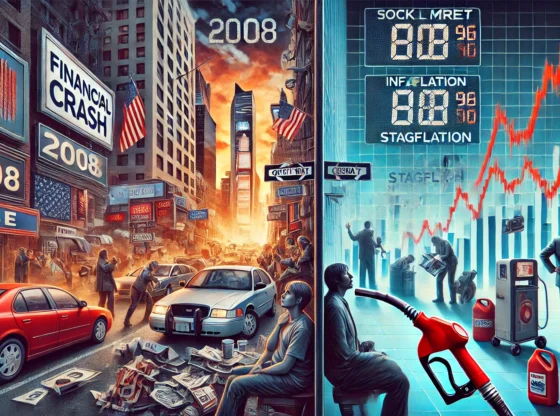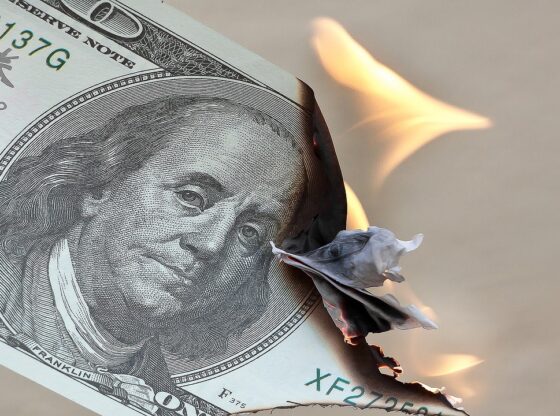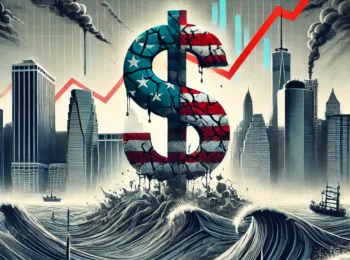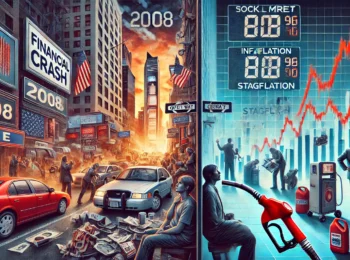The Recession Threshold: 18% Tax Receipts of GDP
One of the most striking patterns in U.S. economic history is the link between federal tax receipts and recessions. Since 1933, whenever federal tax receipts have exceeded 18% of GDP, a recession has almost inevitably followed. This phenomenon highlights the delicate balance between taxation and economic growth.
At 18% of GDP, the tax burden becomes significant enough to restrict consumer spending and business investment, two primary drivers of the U.S. economy. In essence, the economy cannot sustain higher levels of tax collection without triggering a downturn. This pattern was evident in 2022, when tax receipts climbed and GDP declined for two consecutive quarters. While the economy narrowly avoided a technical recession, the stress on economic growth was clear.
What makes the current situation particularly concerning is the broader fiscal environment. The U.S. debt-to-GDP ratio stands at 125%, a historically high level. In this context, even a mild recession could have outsized consequences, as shrinking economic output would push the debt ratio even higher, amplifying fiscal vulnerabilities.
Deficits in a Recession: The Escalating Fiscal Challenge
Deficits tend to balloon during recessions as government spending increases to support the economy while tax revenues decline. Historically, the U.S. has experienced significant deficit expansions in past recessions:
- 600 basis points (6%) of GDP in one case
- 800 basis points (8%) in another
- 1200 basis points (12%) during the 2008 financial crisis
Currently, the U.S. is already running a deficit of 7% of GDP, a high baseline compared to previous pre-recession levels. If a recession hits, the deficit could expand by another 600 to 1200 basis points, pushing it to an unprecedented 13% to 20% of GDP.
A 20% deficit-to-GDP ratio would mean the government is spending one-fifth more than the total annual output of the economy—a level that is not sustainable without dramatic consequences. Such deficits would drive up borrowing needs, exacerbate the debt burden, and limit the government’s ability to respond to future crises.
Why This Time is Different: Rising Treasury Yields
Traditionally, treasury yields fall during recessions as central banks lower interest rates and investors seek the safety of government bonds. However, the next recession could break from this pattern due to unique pressures in the current economic landscape:
Global Dollar Dependency:
Foreign borrowers owe $13 trillion in U.S. dollar-denominated debt. During a recession, the dollar typically strengthens as global investors seek safety. This creates a “short squeeze” for foreign borrowers, who must scramble to obtain dollars to service their debts. The resulting demand for dollars could drive treasury yields higher instead of lower.
Tariffs, a Rising Dollar, and the Global Short Squeeze
This “short squeeze” on foreign borrowers could also be a result of, or worsen, due to what Trump has proposed in terms of raising tariffs to 100% on all imports in the more extreme case. While tariffs might aim to reduce trade deficits, they could inadvertently strengthen the dollar as fewer dollars flow out of the U.S. for imports. A stronger dollar, in turn, exacerbates the burden on foreign borrowers with $13 trillion in dollar-denominated debt.
In this situation, foreign borrowers must acquire more expensive dollars to service their debt, straining their economies. To raise liquidity, many would sell U.S. assets, including treasuries, which could increase yields and destabilize financial markets. Emerging markets, heavily reliant on dollar debt, are particularly vulnerable, risking financial crises and contagion effects.
Massive Treasury Sell-Offs:
Foreign investors hold $57 trillion in U.S. dollar-denominated assets, including $8.5 trillion in treasuries. If a recession leads to liquidity pressures, these investors may liquidate their holdings, driving treasury prices down and yields up. This selling pressure would compound the government’s borrowing challenges.
Domestic Strains:
Domestically, banks and households could also become net sellers of treasuries. Banks, which are regulated into holding treasuries as reserve assets, might need to sell to shore up liquidity. Similarly, households facing job losses and reduced incomes could liquidate assets, adding to the selling pressure.
The combined effect could overwhelm the market, with no single entity large enough to absorb the supply of treasuries. This would represent a significant departure from previous recessions, where treasury yields typically declined as demand increased.
A Binary Outcome: Collapse or Fed Intervention
The escalating fiscal and economic pressures create a binary scenario for the U.S. economy: either a severe financial collapse or aggressive intervention by the Federal Reserve. If treasury yields rise sharply during a recession, the cost of borrowing will increase for the government, businesses, and households, further deepening the economic downturn.
The only viable solution in such a scenario may be for the Federal Reserve to intervene by printing money on a massive scale to stabilize the treasury market and provide liquidity. However, this approach carries risks, including inflation and erosion of global confidence in the dollar.
The Path Forward
The U.S. faces an unprecedented fiscal challenge, with high deficits, rising debt, and systemic pressures converging in ways that threaten economic stability. Addressing these issues will require a combination of innovative policies, fiscal discipline, and coordinated action to avoid a debt spiral. For the public, it is a stark reminder of the interconnectedness of global finance and the importance of sound economic leadership in navigating these turbulent times.


![OpenAI. (2025). ChatGPT [Large language model]. https://chatgpt.com](https://www.illustratedcuriosity.com/files/media/55124/79bc18fa-f616-4951-856f-cc724ad5d497-560x416.webp)
![OpenAI. (2025). ChatGPT [Large language model]. https://chatgpt.com](https://www.illustratedcuriosity.com/files/media/55099/2638a982-b4de-4913-8a1c-1479df352bf3-560x416.webp)








![OpenAI. (2025). ChatGPT [Large language model]. https://chatgpt.com](https://www.illustratedcuriosity.com/files/media/55136/b1b0b614-5b72-486c-901d-ff244549d67a-350x260.webp)
![OpenAI. (2025). ChatGPT [Large language model]. https://chatgpt.com](https://www.illustratedcuriosity.com/files/media/55124/79bc18fa-f616-4951-856f-cc724ad5d497-350x260.webp)
![OpenAI. (2025). ChatGPT [Large language model]. https://chatgpt.com](https://www.illustratedcuriosity.com/files/media/55099/2638a982-b4de-4913-8a1c-1479df352bf3-350x260.webp)







